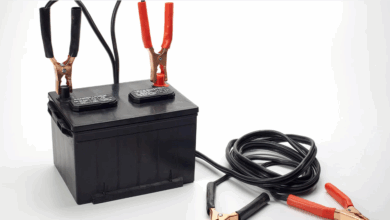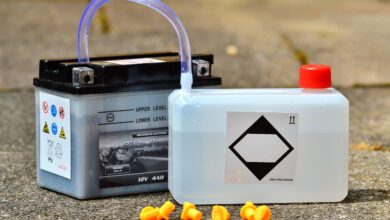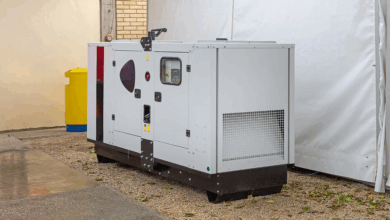Peace of Mind: The Best Generators for Home Backup

Peace of Mind: Your Ultimate Guide to Home Backup Generators
Power outages are more than just an inconvenience; they disrupt daily life, pose safety risks, and can lead to costly losses. In today’s increasingly connected world, where everything from our refrigerators to our work relies on a steady flow of electricity, losing power can feel like being abruptly disconnected from civilization itself. For many homeowners, achieving true peace of mind means being prepared for the unexpected – and that’s where a reliable home backup generator comes in.
Having a generator isn’t just about keeping the lights on. It’s about maintaining comfort, security, and normalcy when the grid fails. It ensures your essential appliances – like refrigerators and freezers – keep running, preventing hundreds of dollars in food spoilage. It powers critical medical equipment, keeps your heating or air conditioning functioning to maintain a safe indoor temperature, and allows you to stay connected through phones and the internet. For families, it means less disruption, maintaining routines, and providing a sense of security. For those who work from home, it means lost productivity is a non-issue. In essence, a home generator transforms a stressful, potentially disruptive event into a mere blip, offering invaluable peace of mind.
But with various types and features available, choosing the "best" generator can seem daunting. The truth is, the "best" generator isn’t a one-size-fits-all answer; it’s the one that best fits your specific needs, budget, and circumstances. This guide will walk you through the key considerations to help you make an informed decision and secure your family’s comfort and safety.
Understanding Your Options: Portable vs. Standby Generators
The first major decision you’ll face is choosing between a portable and a standby generator. They serve the same basic purpose but differ significantly in operation, cost, and installation.
-
Portable Generators:
- How they work: These are mobile units, typically gasoline-powered, that you roll out, position safely outdoors, manually start, and connect appliances to via extension cords or a transfer switch.
- Pros:
- Lower Initial Cost: Significantly less expensive upfront than standby generators.
- Flexibility & Mobility: Can be used for various purposes beyond home backup, like camping, tailgating, or powering tools at remote job sites.
- Simpler Installation (for basic use): You just need extension cords (or a manual transfer switch installed by an electrician for connecting to your home’s panel).
- Cons:
- Manual Operation: Requires you to be present to start it, connect cords, and refuel it regularly.
- Limited Power: Generally provide enough power for essential circuits or a few appliances, not typically an entire home.
- Fuel Storage: Requires storing gasoline, which has a limited shelf life and poses a fire risk.
- Noise: Can be quite loud during operation.
- Safety Risks: High risk of carbon monoxide poisoning if not operated with extreme caution outdoors, far from windows and doors.
- Standby Generators:
- How they work: These are permanently installed units, usually powered by natural gas or propane, located outside your home. They are connected directly to your electrical panel via an automatic transfer switch (ATS). When the grid power goes out, the ATS detects the loss, signals the generator to start, and automatically switches your home’s power source to the generator. When grid power returns, the ATS switches back and the generator shuts off.
- Pros:
- Automatic Operation: Provides seamless power backup even if you’re not home.
- Higher Capacity: Can typically power your entire home or a significant portion of it, including HVAC systems and major appliances.
- Convenient Fuel Source: Connects to your existing natural gas line (providing unlimited run time) or a large propane tank (requiring refills, but still providing long run times).
- Quieter Operation: Though not silent, they are generally significantly quieter than portable units.
- Increased Home Value: A permanent installation can be an attractive feature for potential buyers.
- Cons:
- Higher Initial Cost: Substantially more expensive to purchase and install.
- Professional Installation Required: Needs proper electrical and fuel line connections, often involving permits.
- Fixed Location: Cannot be moved or used elsewhere.
- Requires Regular Maintenance: Needs routine service checks, similar to an HVAC unit or car engine, to ensure reliability.
Fueling Your Power: A Quick Look
Generators run on various fuels, each with pros and cons:
- Gasoline: Common for portable generators. Widely available but requires storage, degrades over time, and is highly flammable.
- Propane: Excellent for both portable (dual-fuel models) and standby generators. Clean-burning, easily storable in tanks, and doesn’t degrade like gasoline. Run time depends on tank size.
- Natural Gas: Ideal for standby generators connected to a municipal line. Provides unlimited run time during an outage but isn’t available everywhere and pressure can drop during widespread events.
- Diesel: Primarily used for very large commercial or industrial generators. Efficient but diesel engines can be noisy, produce emissions, and fuel requires proper storage to prevent gelling in cold weather.
Key Factors to Consider When Choosing
Once you understand the basic types, here are the critical questions to ask yourself:
-
What are Your Power Needs (Wattage)? This is arguably the most important factor. Make a list of the appliances and systems you must power during an outage. Note their running wattage and starting wattage (the brief surge needed to start motors like refrigerators or HVAC fans). Summing the running wattages gives you a baseline, but you need capacity to handle the starting wattages, especially if multiple motor-driven items might start at once. Generator manufacturers provide guides and online calculators to help you estimate. Overestimating slightly is safer than underestimating.
- Examples:
- Basic Essentials (lights, fridge, phone charging): 2,000-5,000 watts (portable).
- Added Comfort (some kitchen appliances, perhaps a window AC or furnace fan): 5,000-10,000 watts (larger portable or small standby).
- Whole House (including central AC, heat, well pump, major appliances): 10,000+ watts (standby).
- Examples:
-
What’s Your Budget? Portable generators can range from a few hundred to a couple of thousand dollars. Standby generators, including installation, can cost anywhere from $5,000 to $20,000 or more, depending on size, brand, and complexity of installation.
-
How Frequent/Long Are Outages in Your Area? If outages are rare and brief, a portable might suffice. If they are frequent, long, or you live in a remote area prone to extended grid failures, the convenience and capacity of a standby generator offer greater value.
-
What’s Your Acceptable Noise Level? Portable generators are generally loud (70-80+ decibels at 23 feet – about the noise of a vacuum cleaner or garbage disposal). Standby units are typically quieter (55-65 decibels – closer to conversation level or an air conditioner). Consider proximity to neighbors.
-
Where Will it Be Located? Generators must be operated outdoors in well-ventilated areas, far from windows, doors, and attached garages to prevent carbon monoxide buildup. Standby units need a dedicated, level site and may have setback requirements from property lines or structures.
-
Installation Requirements: Are you comfortable wheeling out a portable unit and managing extension cords? Or do you prefer the ‘set it and forget it’ nature of a professionally installed standby unit with an automatic transfer switch? The ATS is crucial for safety with home wiring, preventing ‘backfeeding’ the grid which can electrocute utility workers.
- Maintenance Commitment: Both types require maintenance (oil changes, filter checks, testing). Standby generators often have automatic exercise cycles to keep them ready but still need professional servicing. Are you willing to perform routine checks?
The "Best" Based on Your Needs
Based on the factors above, here’s a simplified view of what might be "best":
- Best for occasional, short outages & essential power: A portable generator (gasoline or dual-fuel). Consider inverter technology for cleaner power for sensitive electronics.
- Best for longer, more frequent outages & whole-home power: A standby generator (natural gas or propane). Provides ultimate convenience and capacity.
- Best balance of cost and convenience for moderate needs: A larger portable generator connected via a manual transfer switch, or a smaller standby unit covering essential circuits.
- Best for sensitive electronics: Portable generators with inverter technology provide clean, stable power. Many modern standby generators also provide high-quality power.
Safety First: Always
Regardless of the type, generator safety is paramount:
- NEVER run a generator indoors or in an attached garage. Carbon monoxide is odorless, colorless, and deadly.
- Ensure adequate ventilation and placement at least 20 feet away from your home’s windows and doors.
- Use heavy-duty, outdoor-rated extension cords.
- If connecting a portable generator to your home’s electrical system, it must be done via a properly installed manual transfer switch by a qualified electrician to avoid dangerous backfeeding.
- A standby generator must be installed by a qualified professional.
Maintenance Matters
Like any engine, a generator requires regular maintenance to ensure it starts and runs reliably when needed most. Follow the manufacturer’s recommended schedule, which typically includes:
- Checking and changing oil and filters.
- Inspecting spark plugs and fuel lines.
- Testing the unit regularly (especially important for standby generators with exercise cycles).
- Keeping fuel fresh (use stabilizer for gasoline) or ensuring propane/natural gas supply is adequate.
FAQs
- Q: How much power (wattage) do I really need?
A: It depends entirely on what you want to power. List your essential appliances (fridge, freezer, lights, furnace fan, medical equipment). Find their running and starting wattages. Use online calculators or consult an electrician or generator dealer to determine the total wattage required, ensuring you account for starting surges. - Q: Is a portable generator enough to power my whole house?
A: Generally, no. Most portable generators provide 3,000-10,000 watts, sufficient for essentials or maybe a few rooms, but not usually enough for central air conditioning, electric heat, or simultaneously running multiple large appliances. Whole-house backup typically requires a standby generator (10,000+ watts). - Q: How noisy are generators?
A: Portable generators are often quite loud (70-85 decibels), comparable to a lawnmower. Standby generators are significantly quieter (55-65 decibels), closer to an air conditioner’s noise level. Check the decibel rating before buying if noise is a concern. - Q: Can I install a standby generator myself?
A: It is strongly recommended to hire a qualified electrician and potentially a plumber (for gas lines) to install a standby generator. This involves complex electrical wiring (transfer switch) and fuel line connections, which require expertise and often permits to ensure safety and compliance with codes. - Q: What’s a transfer switch and why do I need one?
A: A transfer switch (manual or automatic) safely disconnects your home from the utility grid before connecting the generator. This prevents power from the generator from flowing back onto the utility lines ("backfeeding"), which is extremely dangerous and potentially fatal for utility workers. It’s a critical safety component for any generator connected directly to your home’s electrical system. - Q: How long can a generator run continuously?
A: This varies greatly. Portable gasoline generators typically run for 8-12 hours on a tank, requiring manual refueling. Propane portable generators run longer depending on tank size. Standby generators connected to natural gas can run indefinitely as long as the gas supply is active. Standby units on propane are limited by the size of the propane tank. - Q: What kind of maintenance is needed?
A: Both types need regular checks (oil levels, visual inspection) and scheduled maintenance like oil changes, filter replacements, and battery checks (for electric start/standby). Standby generators often have automatic exercise cycles but still require professional annual servicing.
Conclusion
Investing in a home backup generator is investing in peace of mind. It’s a decision that shifts your family from a state of vulnerability during power outages to one of preparedness and security. While the initial cost and complexity might seem daunting, the ability to keep your lights on, your food cold, your home comfortable, and your essential services running during grid failures provides a sense of stability and control that is truly invaluable.
By carefully assessing your power needs, understanding the differences between portable and standby units, considering fuel types, and factoring in installation, safety, and maintenance, you can identify the best generator solution for your home. Consult with qualified electricians or generator dealers to get precise recommendations and ensure proper, safe installation. Don’t wait for the next storm to leave you in the dark. Take the steps today to choose the right generator and ensure that when the power goes out, your peace of mind stays firmly on.




![How to Bypass CO Sensor on Generator – [4-Step Safety Guide]](https://www.generator411.com/wp-content/uploads/2025/08/co-sensor-on-generator-390x220.png)